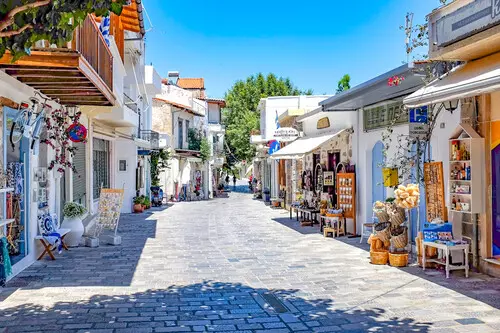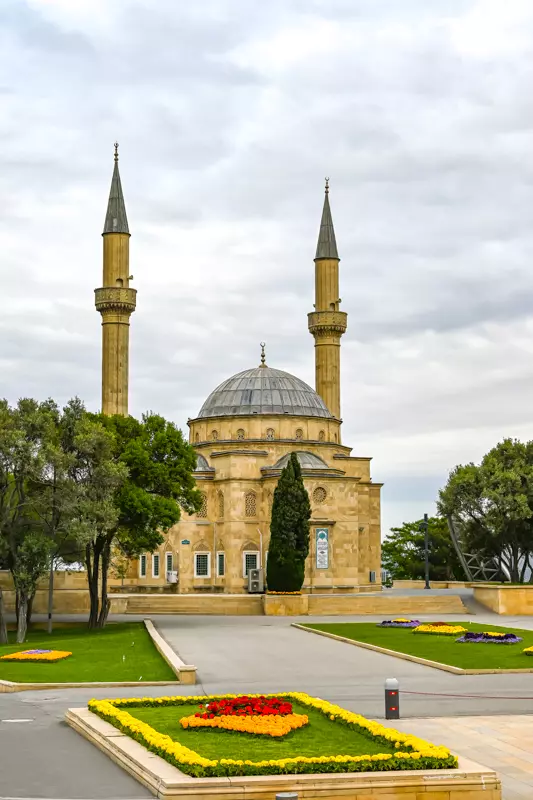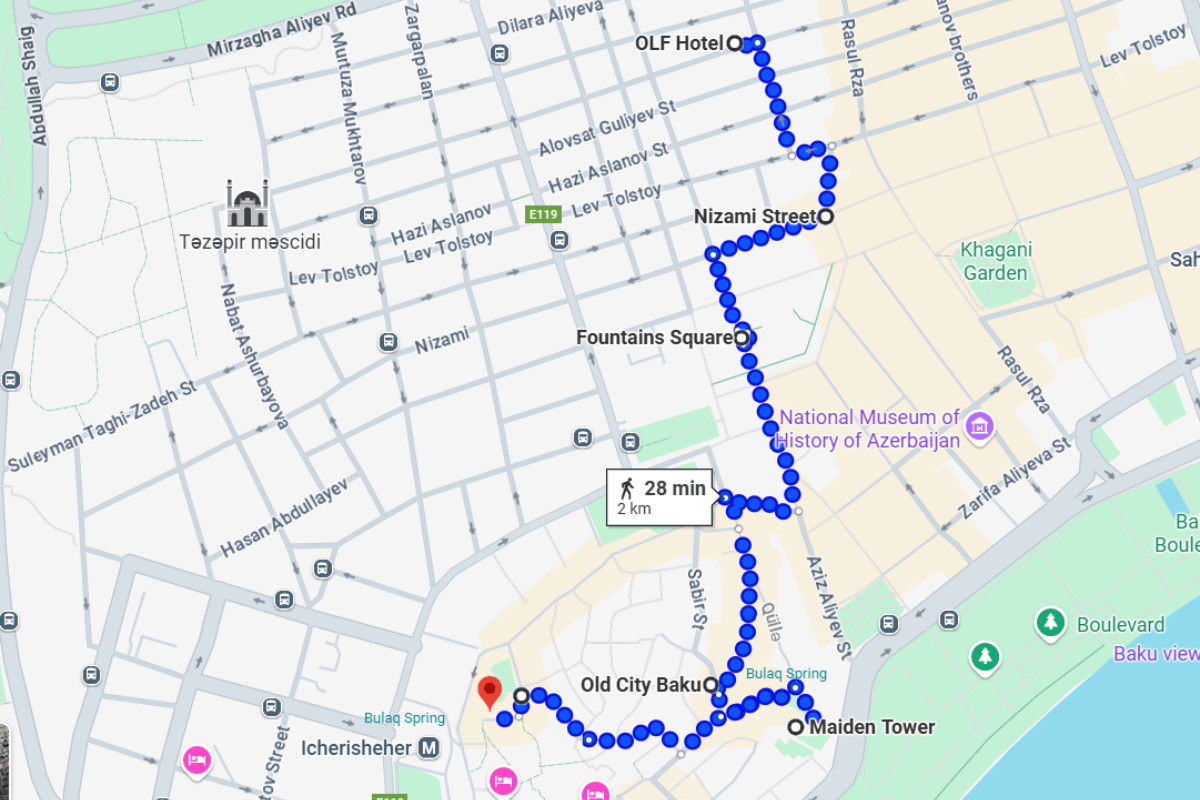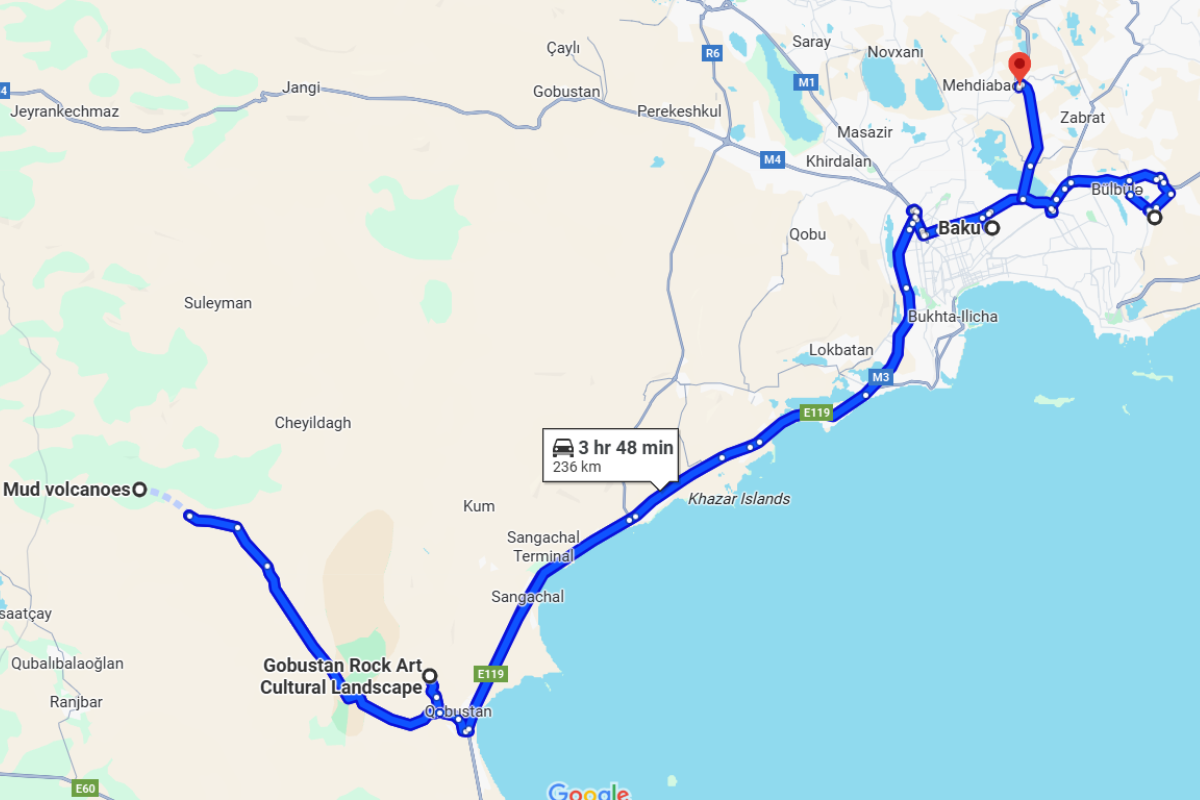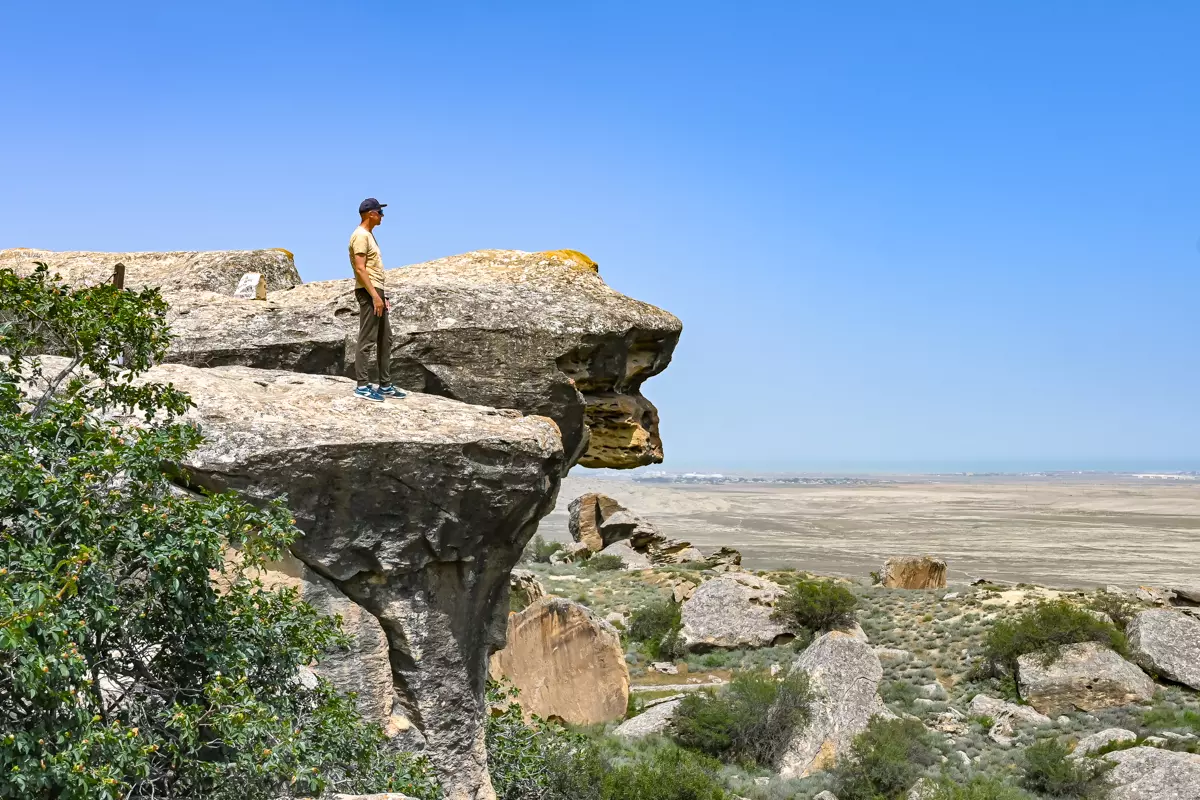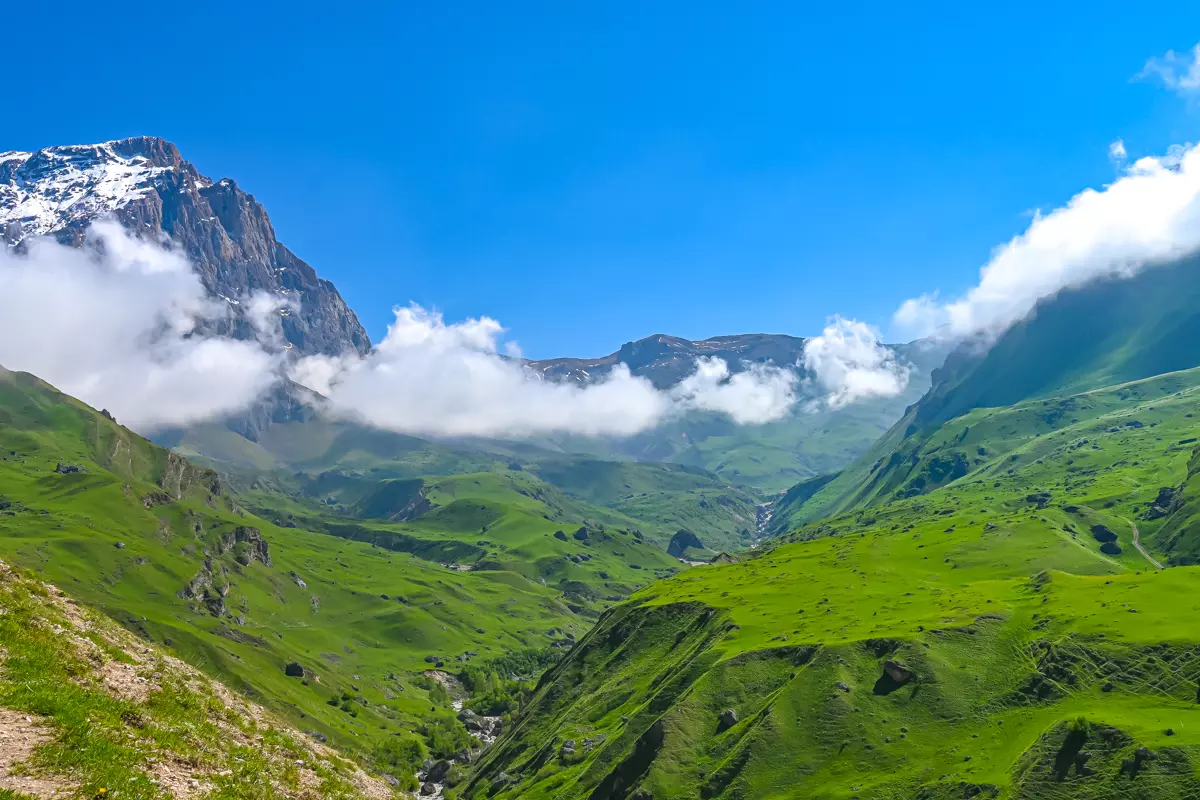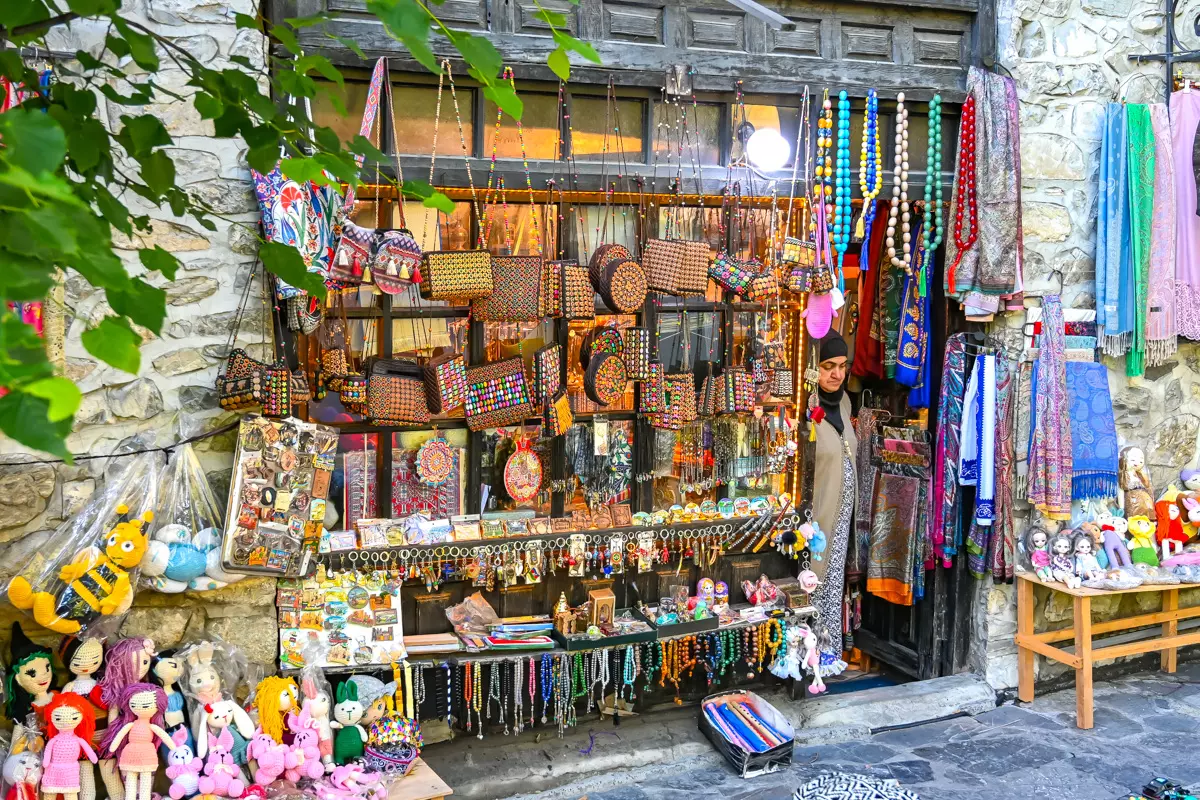3 Days In Baku: Perfect Itinerary For First Timers
When planning my trip to Azerbaijan, I expected to make just a short stop in Baku — with no big expectations, just a quick look around. But after only a few hours of walking around, everything changed: Azerbaijan’s capital surprised me with its contrasts, warm hospitality, and interesting places to explore.
After the trip, I put together a three-day Baku itinerary that will help you not only see the most famous landmarks but also feel the city’s unique spirit — from the Old City to the Gobustan rock formations. Whether you’re interested in history, architecture, or simply want to relax in a city that’s not yet overrun by tourists, Baku offers a genuinely authentic experience.
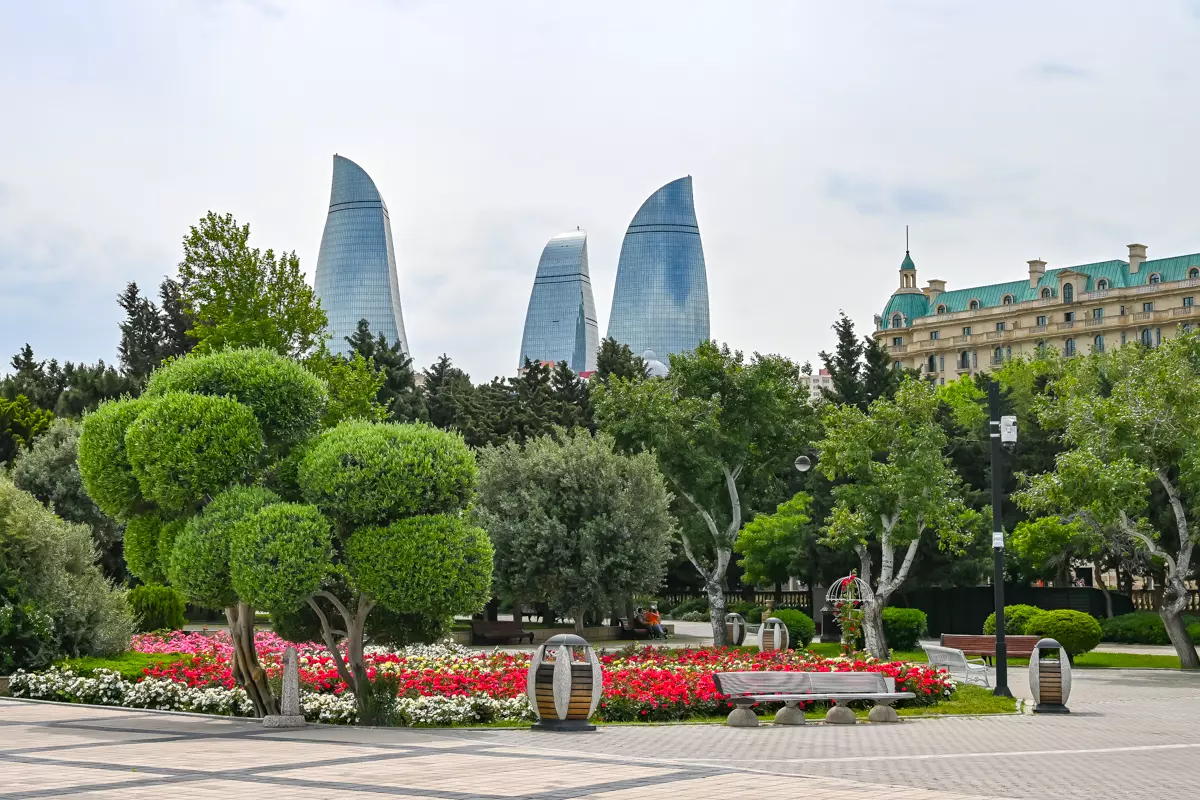
Baku Introduction
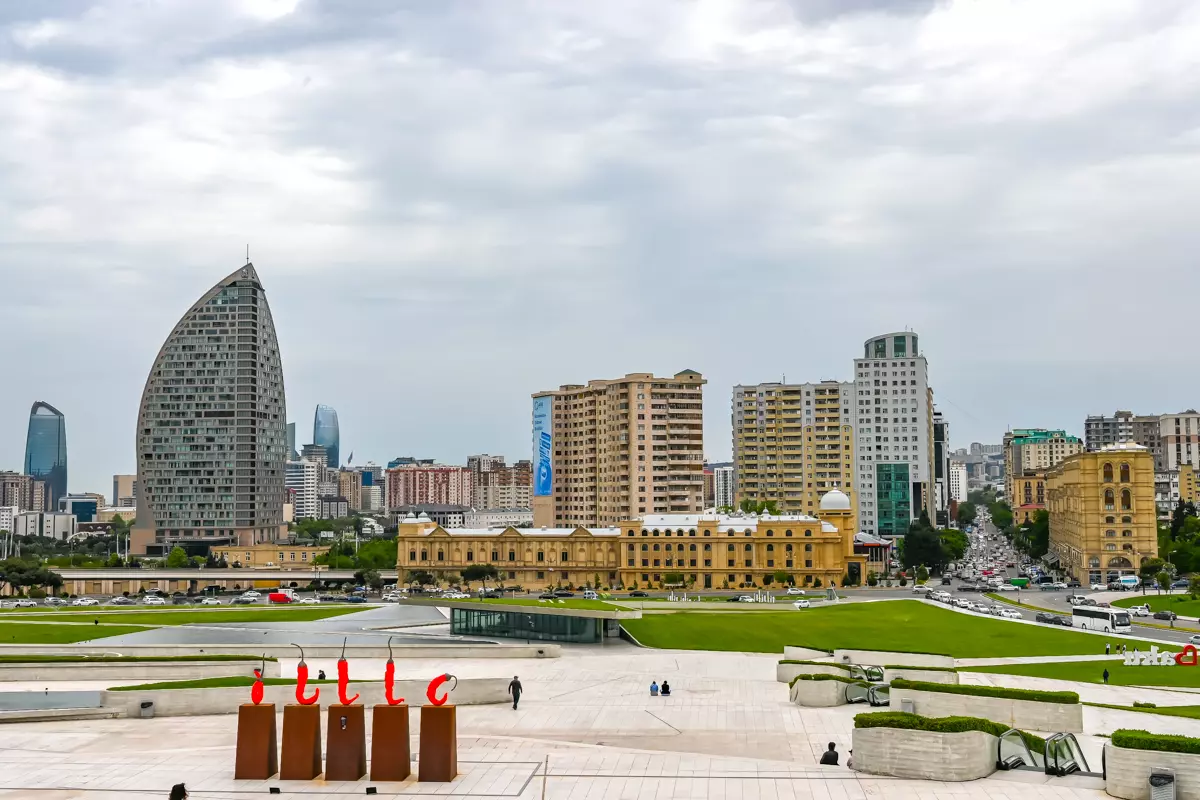
Polished with oil money, Baku at times resembles Dubai, with its gleaming skyscrapers, modern buildings, and striking architecture. If you only stay in this city, you might get the impression you’re in one of the Persian Gulf metropolises, but don’t be fooled.
The history of Azerbaijan’s capital stretches back over two thousand years. The city bears the marks of Persians, Arabs, Mongols, Safavids, the Russian Empire, and the Soviets. It first flourished as a trade hub and, by the late 19th century, had become one of the world’s key oil centers. Major names like the Nobels and the Rothschilds invested in Baku during its oil boom. The impact of their involvement is still visible today, from industrial infrastructure to elements of the city’s architectural legacy.
The historic core of Baku, the Old City of Icherisheher, is a UNESCO World Heritage Site. Yet just beyond its defensive walls lies a very different world. You’ll find everything from Soviet-era apartment blocks to contemporary architectural landmarks like the Flame Towers and the Heydar Aliyev Center, designed by Zaha Hadid.
After regaining independence in 1991, Azerbaijan began forging a new national image, backed by a strong energy sector. Billions were invested in cultural infrastructure, including public spaces, museums, parks, and performance venues.
Over the past few decades, Baku has undergone a remarkable transformation. Straight boulevards, marble squares, concert halls, and museums have shaped a new face for the city. And while some might find it a bit overly polished or lacking warmth, Baku undeniably has its own unique charm.It may not captivate at first glance, but it holds an atmosphere full of contrasts and rich history, something truly worth experiencing at least once, even if only as a stopover.
What To Do In Baku – Day 1
On your first day in Baku, spend time exploring the local culture, modern architecture, and enjoy a scenic walk along the Caspian Sea. Start early to make the most of your time. Below, you’ll find an easy to use map. Simply enter your location instead of the first stop, and the route will adjust accordingly.
Yasil Bazaar
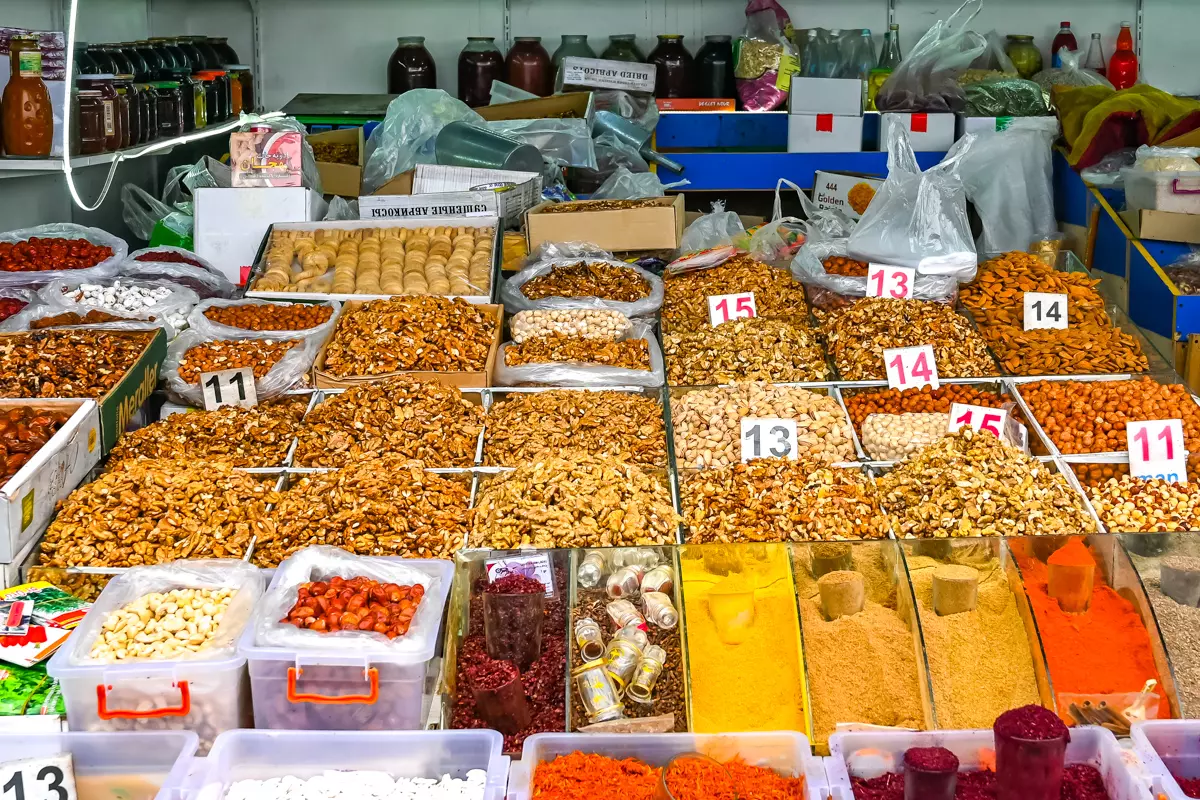
This is one of the largest local bazaar in Baku, where locals themselves come to shop. Your first impression will likely be the noise, the smells, and the general bustle. The bazaar atmosphere is authentic—no kitsch, no crowds of tourists. Stalls are filled with fruit, vegetables, nuts, dried fruits, saffron, olives, and local cheeses.
If you’re looking for affordable and truly local souvenirs, this is the right place. Spices and dried fruits are especially worth checking out—they’re high quality and much cheaper than in the city center.
Most vendors speak only Azerbaijani or Russian, but simple gestures are often enough to communicate. Even if you’re not planning to buy anything, simply walking through the bazaar is a cultural experience in itself.
Tips: Bring small bills if you plan to make a purchase. 30–45 minutes should be enough for a visit, and don’t forget to bargain.
Accommodation: Here are all your hotel options in Baku.
Heydar Aliyev Center
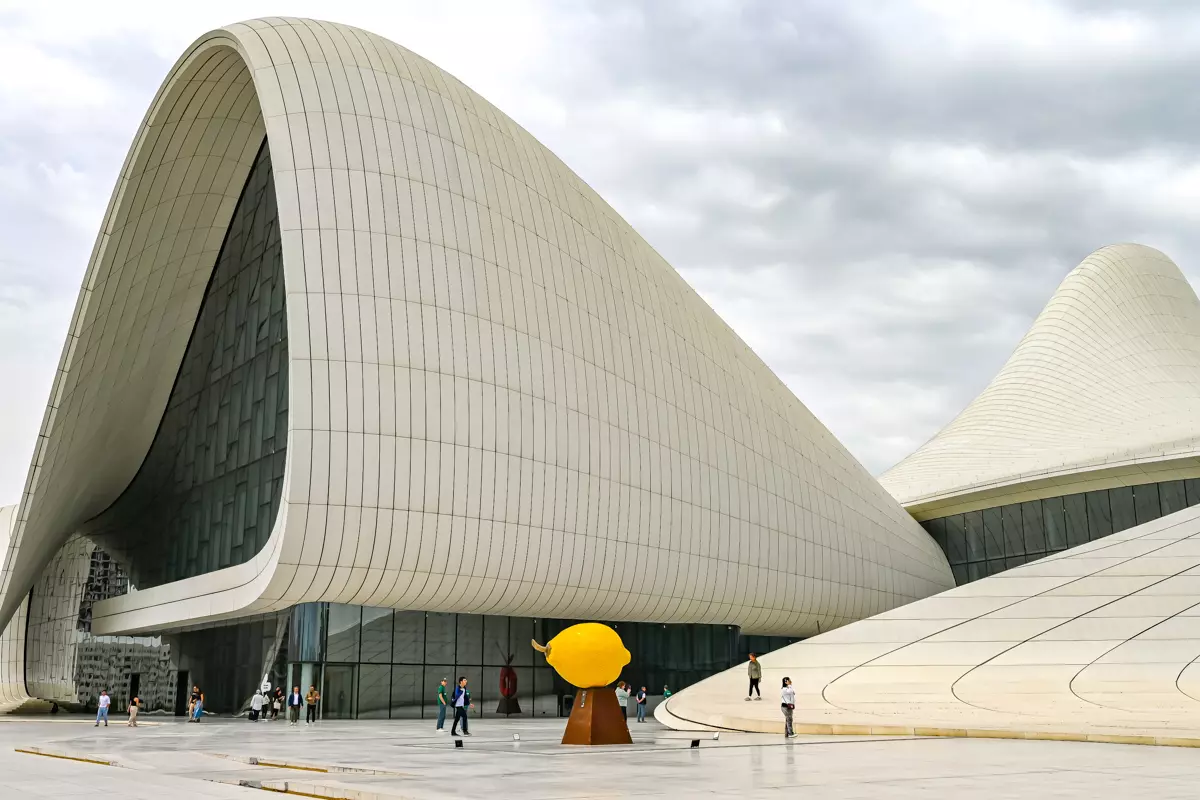
After visiting the market, go to the Heydar Aliyev Center, one of Baku’s most iconic and modern buildings. It is a symbol of contemporary Azerbaijani architecture, designed by the renowned architect Zaha Hadid.
The building is famous for its distinctive flowing, curved form that breaks away from traditional architectural shapes. Its futuristic design, smooth lines, and innovative structure have made it an architectural landmark recognized worldwide, showcasing Azerbaijan’s cultural progress and modern identity.
Inside the building, there is a museum featuring various exhibitions about Azerbaijani culture, traditional costumes, musical instruments, and the legacy of Heydar Aliyev himself. Some exhibits are interactive, and information is available in English.
Ticket Price & Opening Hours: The entrance fee is €7.5 (15 AZN). Most visitors spend between 1 and 1.5 hours inside. The museum is open daily from 10:30 A.M. to 5 P.M., except on Mondays when it is closed. You can conveniently buy tickets on-site or online in advance.
Seaside Promenade
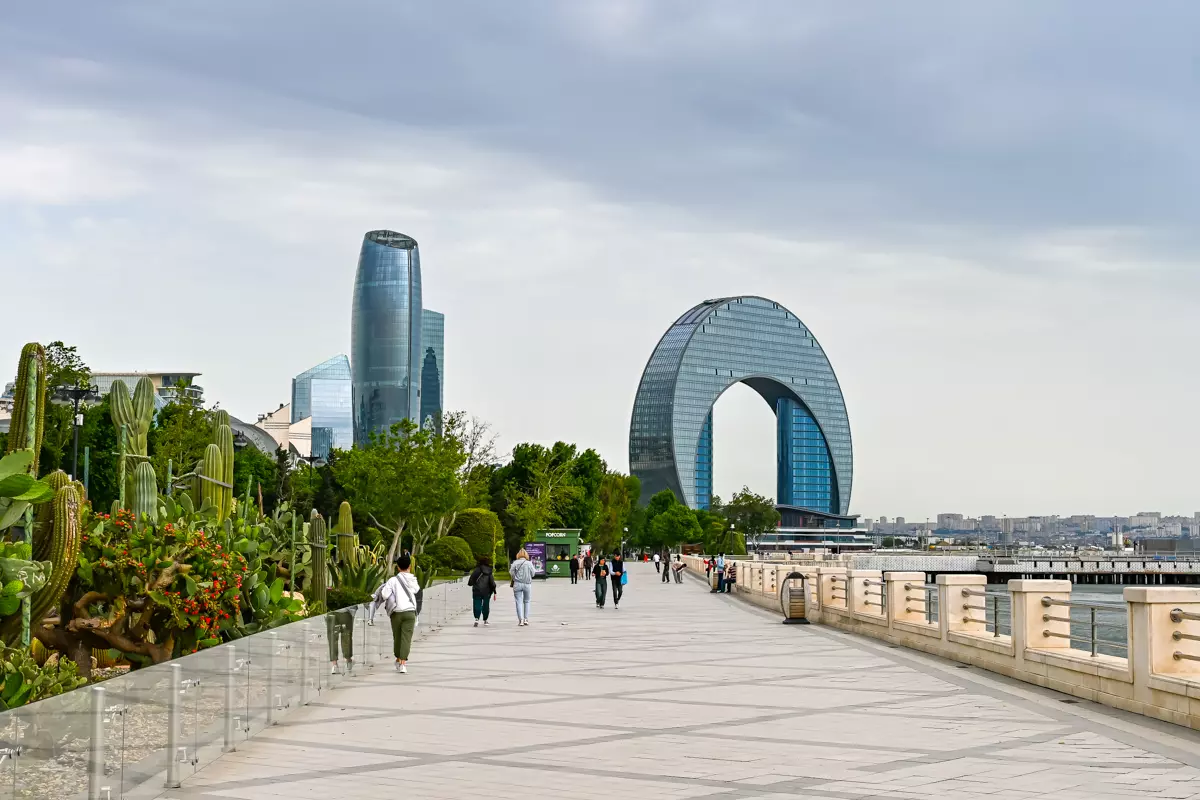
Next, head towards the Caspian Sea. The promenade stretches for several kilometers and is well-maintained, with palm trees, flower beds, benches, and views of the harbor. Locals enjoy walking, cycling, or riding scooters here and spending time with their families.
Walking along the shore, you will pass several sights: Baku Eye, the Carpet Museum, and “Little Venice.” There are also cafes, ice cream kiosks, or you can just sit and watch local life. Evenings are busier, but it’s still quite calm.
Baku Eye
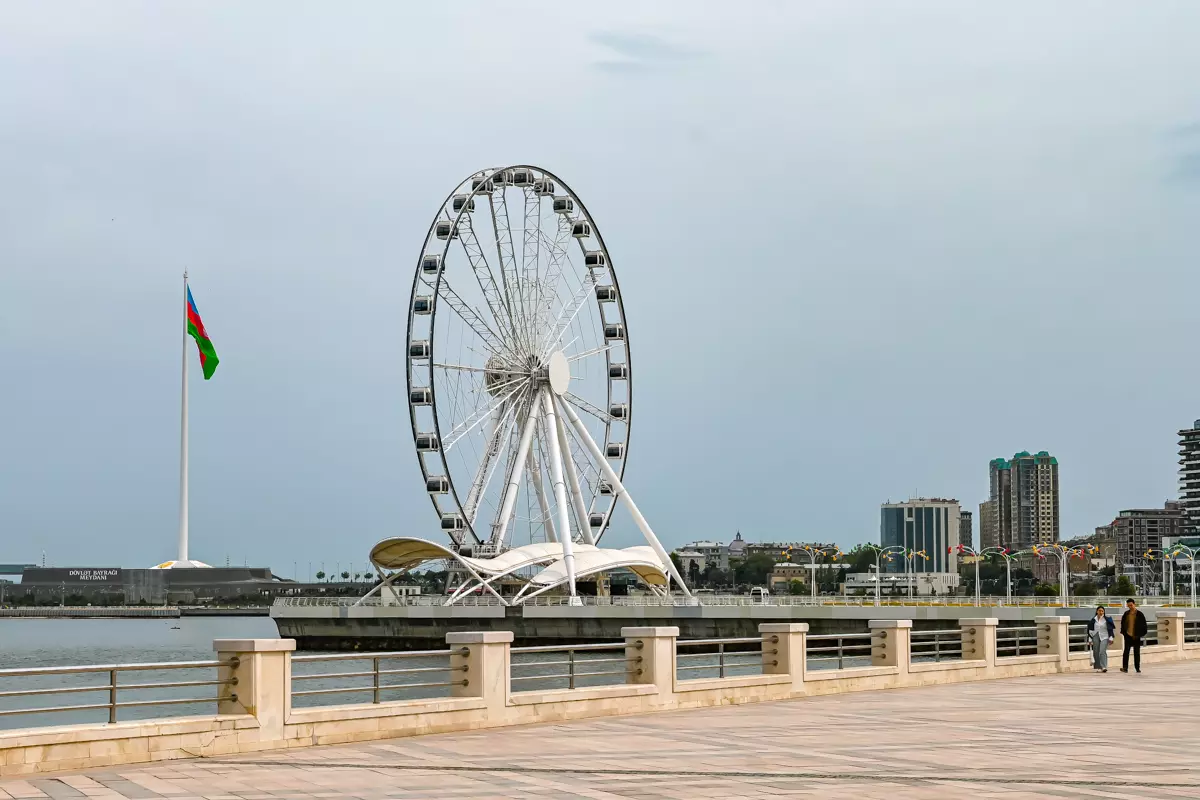
Baku Eye is a Ferris wheel similar to the London Eye, but smaller. Although it’s not very tall, the view from the top opens a fairly wide cityscape. You can see the sea, Flame Towers, the Old City, and further neighborhoods.
The cabins are enclosed and air-conditioned, so you can ride in any weather. The wheel turns slowly, and a full rotation takes about 15–20 minutes. The best time to visit is before sunset or in the evening when the city is lit up.
Opening Hours & Ticket Price: The Baku Eye is open daily from 10 A.M. to 10 P.M. Ticket price is €5 (10 AZN) for adults.
Azerbaijan Carpet Museum
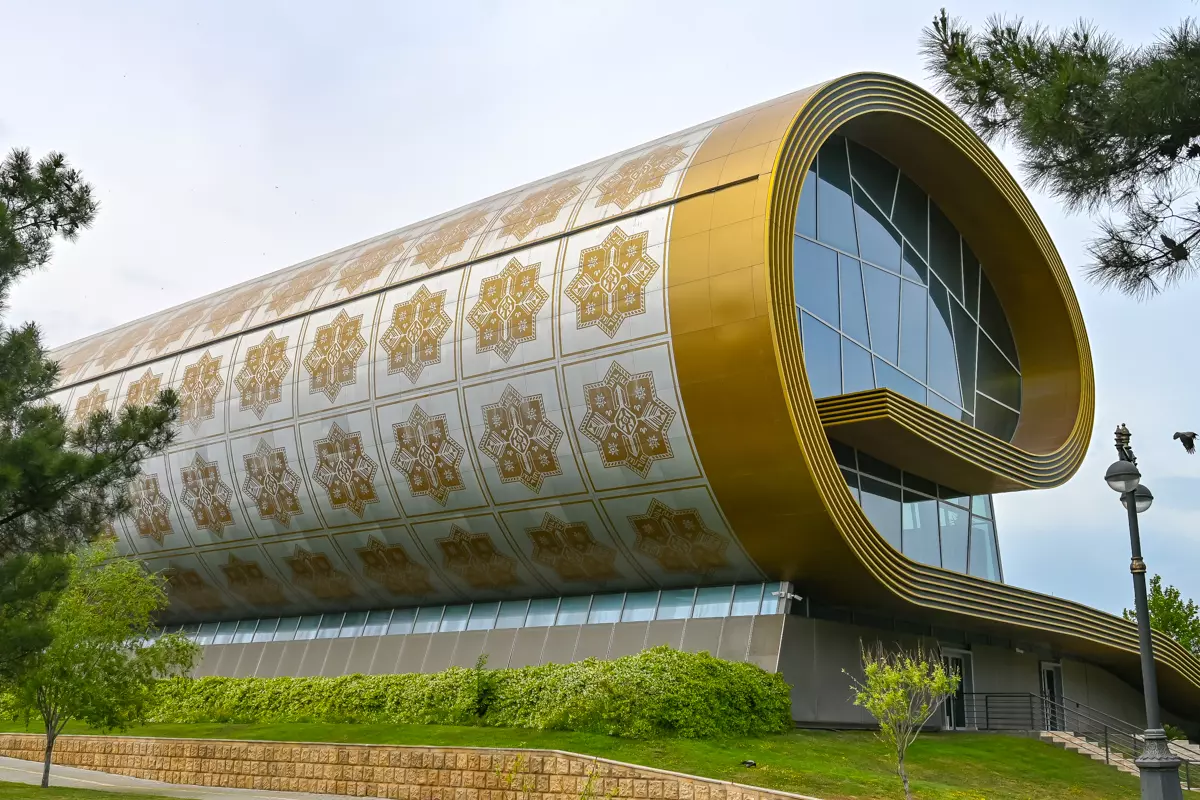
Just a few steps from the waterfront stands the carpet museum with an interesting shape. The building looks like a rolled-up carpet and has become a modern city symbol.
Inside, carpets from various regions of the country are exhibited, some dating back several centuries. The museum also showcases weaving techniques, the meanings of colors, and regional differences. Part of the exhibition is interactive, with information provided in English.
There is a small area where you can watch weaving demonstrations or view videos about the history of carpets. The museum isn’t large, but the exhibits are concentrated and engaging, even for those who may not have a strong interest in carpets.
Good To Know: The ticket price is €5 (10 AZN). Opening hours are from 10 A.M. to 6 P.M., closed on Mondays. A visit usually takes 30–45 minutes. The museum also has a souvenir shop with local fabrics and small handicrafts.
Funicular & Upland Park
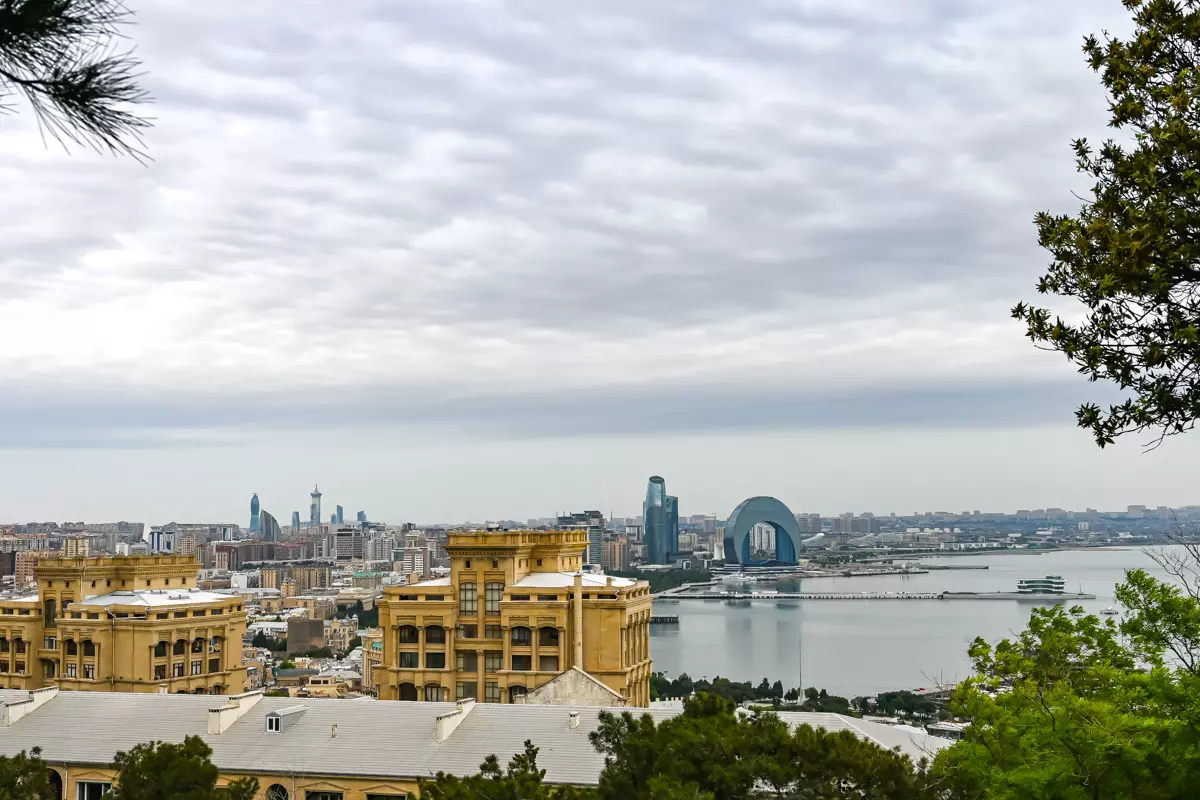
End your day by taking the funicular up to Upland Park. From above, you’ll enjoy a stunning panorama of Baku: the Old City below, skyscrapers further out, and the Caspian Sea on the horizon. The Flame Towers proudly stand in this area. In the evening, when the towers are illuminated, the view is especially impressive.
Upland Park features walking paths, a memorial to those who died in the Karabakh wars, and benches for relaxation. Locals come here for walks, and tourists come for beautiful photos. The area is clean and well-maintained, perfect for a quiet rest after a long day.
Good To Know: A funicular ticket costs is €0.5 (1 AZN). The ride takes a few minutes, but you can also walk up on foot (steep uphill).
Discover: Baku Night Tours and Unique Experiences.
Flame Towers & Mosque
Of course, the Flame Towers deserve a special mention, as they appear right before your eyes the moment you step off the funicular. These three flame-shaped skyscrapers define modern Baku and dominate the city’s skyline. During the day, glass and steel shimmer in the sunlight; at night, the towers light up with massive LED displays, showing animations of flames, waving Azerbaijani flags, and national motifs. The towers contain offices, residential apartments, and the Fairmont Baku, a five-star luxury hotel — but even just seeing them from the outside offers a memorable experience.
Just a few steps from the Flame Towers stands the Alley of Martyrs Mosque. This small and elegant shrine, built in the 1990s with support from the Turkish government. It sits beside Martyrs’ Lane — a memorial honoring those who lost their lives during the Black January tragedy and the Nagorno-Karabakh conflict.
Click the map to see the route with all the stops of the day on Google Maps.
What To Do In Baku – Day 2
The second day will be calmer but no less interesting. This time, you will focus on the city’s history and culture, so set out for walks around old Baku, where the past blends with modern life.
Nizami Street
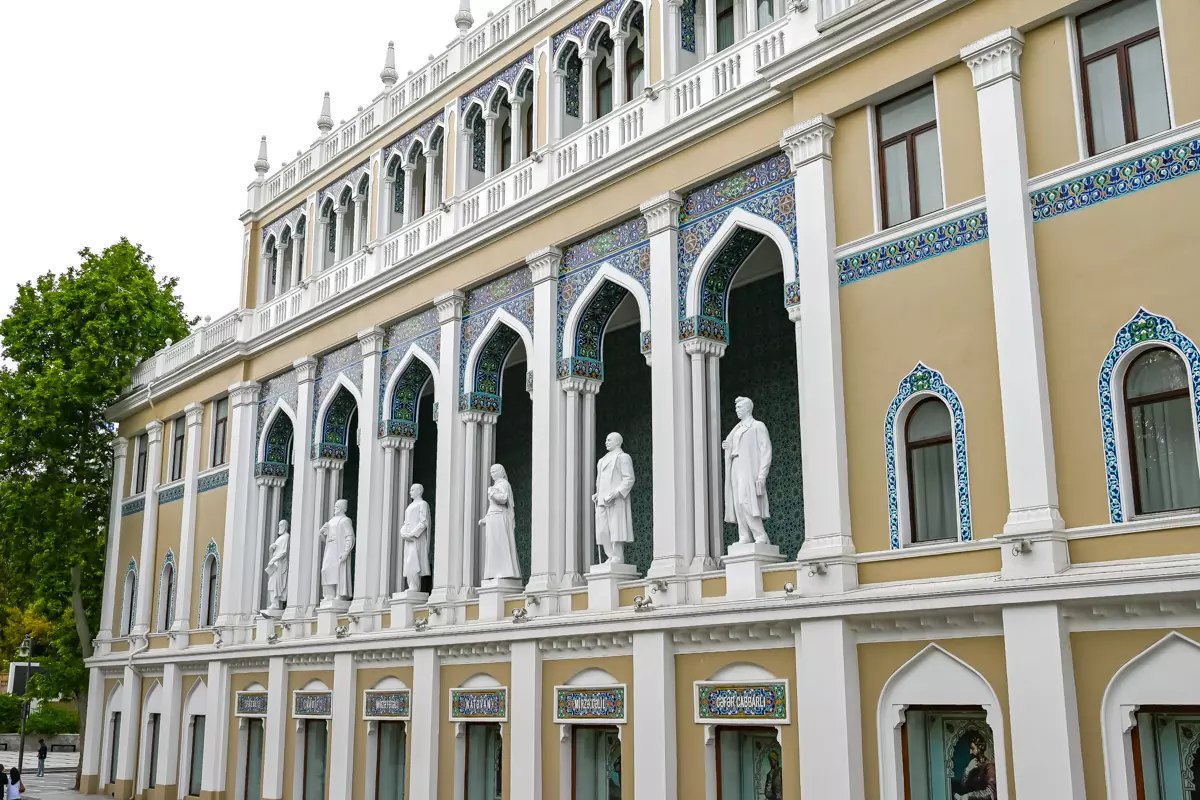
Start your day with a visit to Nizami Street. This is one of the most famous pedestrian streets in Baku, reflecting the city’s cultural and architectural life. It is called the heart of the city because it brings together history, modernity, and everyday life. The street is full of elegant buildings that blend perfectly with modern shopping centers and cafes.
This place is perfect for a stroll to enjoy the rhythm of Baku. On Nizami Street, you will find a variety of shops selling both local handmade crafts and international brands. There are also plenty of cozy cafes where you can relax with a cup of coffee while watching the city life.
Also read: Sheki, Azerbaijan – A Complete Travel Guide
Fountains Square
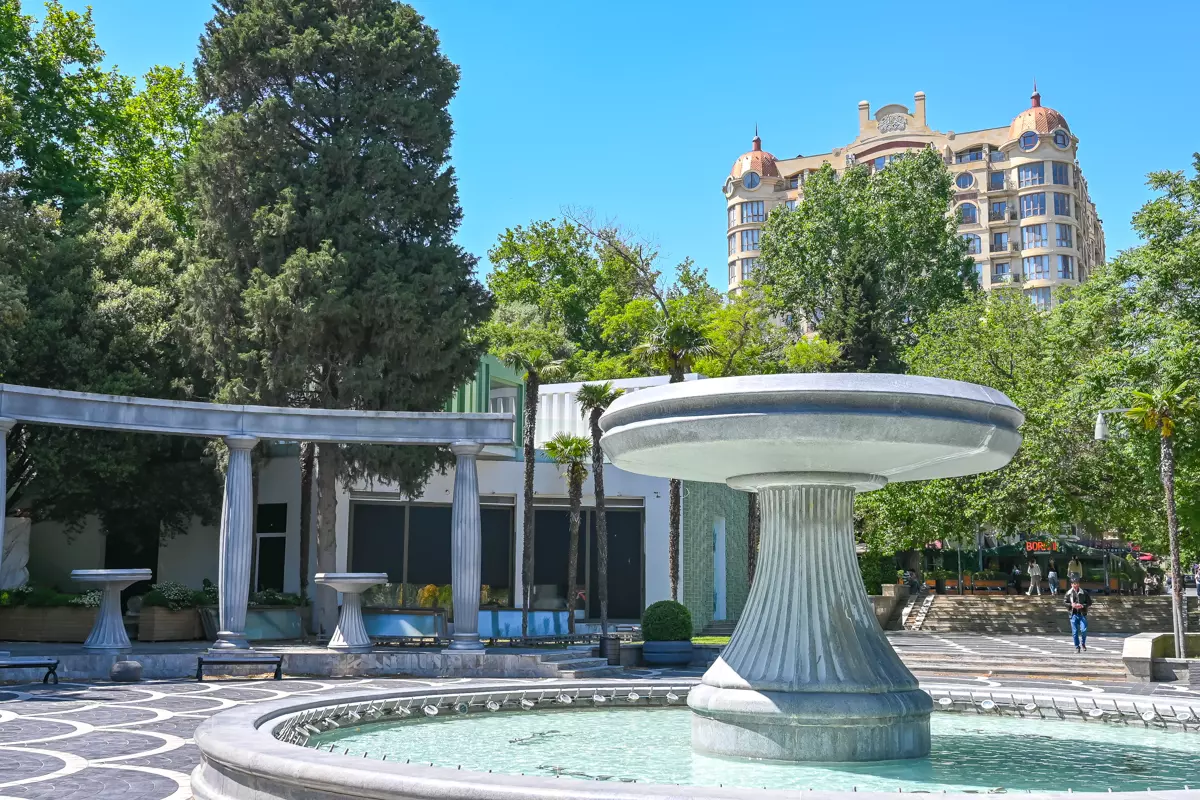
Fountains Square is Baku’s attempt to create something between a European boulevard and a leisure area. Although the fountains don’t always operate, the surroundings are beautiful, with plenty of greenery and life.
The square is also a popular gathering spot where various city events and performances often take place. It’s a great place both for those who want to take a stroll and enjoy the atmosphere, and for those seeking the city’s culture and vibrancy.
Around the square, you’ll find restaurants, fast food spots, and ice cream kiosks. If you’re looking for a great lunch spot, Nergiz Restaurant is an excellent choice — it opens at noon.
From the square, you can walk directly to Icheri Sheher – the Old City, which is very close, just a few hundred meters away.
Old City (Icheri Sheher)
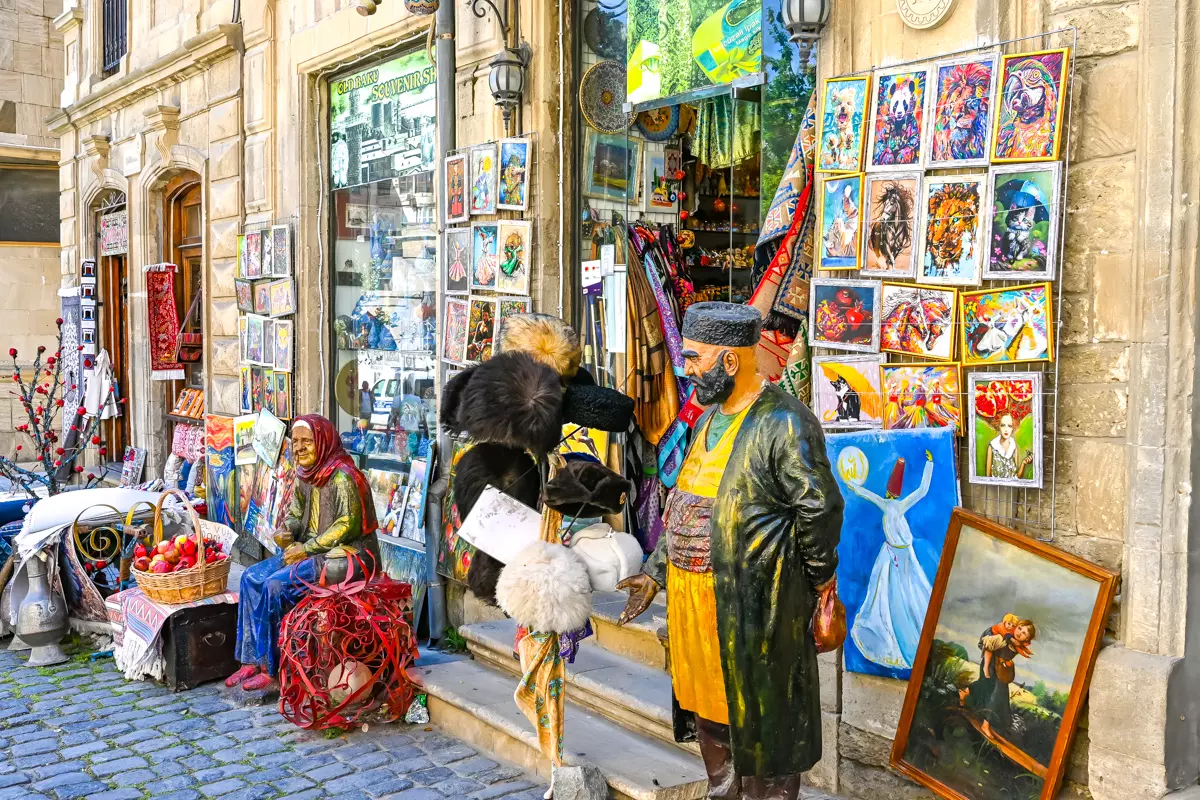
Icheri Sheher is one of the oldest and most important places in Baku, where Azerbaijani history, culture, and traditions intertwine. This historic district, surrounded by defensive walls, is listed as a UNESCO World Heritage Site. Icheri Sheher features narrow stone streets, ancient mosques, fortresses, and stunning architectural monuments that add charm to Baku.
Walking through this district, you can discover many historical sites such as the Maiden Tower and the Juma Mosque, among others. Icheri Sheher is also a great place to experience local culture. Here you will find traditional handicraft shops, small markets, and cozy cafes where you can relax and enjoy delicious Azerbaijani food.
Maiden Tower
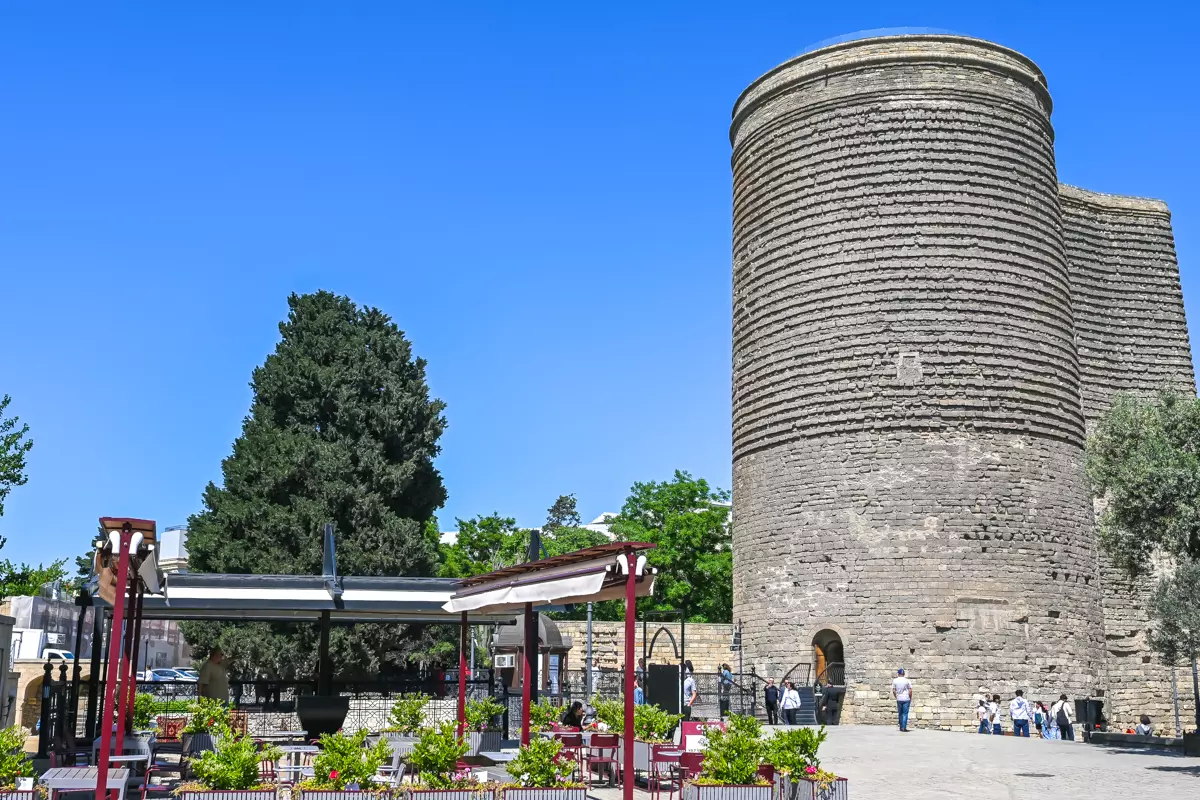
This tower, located in the Old City, was built in the 9th–10th centuries and is one of the oldest architectural structures in Baku. The tower is surrounded by many legends and mysteries, attracting both tourists and history enthusiasts.
Though very old, the Maiden Tower still retains its elegance and mystery. It has been used for various purposes, from a watchtower to a defensive fortress, but its exact function remains unclear. Because of this, the tower is shrouded in various legends, one of which tells the story of a maiden who, to avoid violence, jumped from the tower into the sea.
The tower is quite impressive from the outside, but the interior is simple. Inside, you’ll find stairs, several floors with exhibitions, and a terrace on top. If you want good views of the Old City, it’s worth climbing up.
Opening Hours & Ticket Price: The Maiden Tower is open daily from 10:00 A.M. to 6:00 P.M. Ticket price is €7.5 (15 AZN) for adults.
Palace of the Shirvanshahs
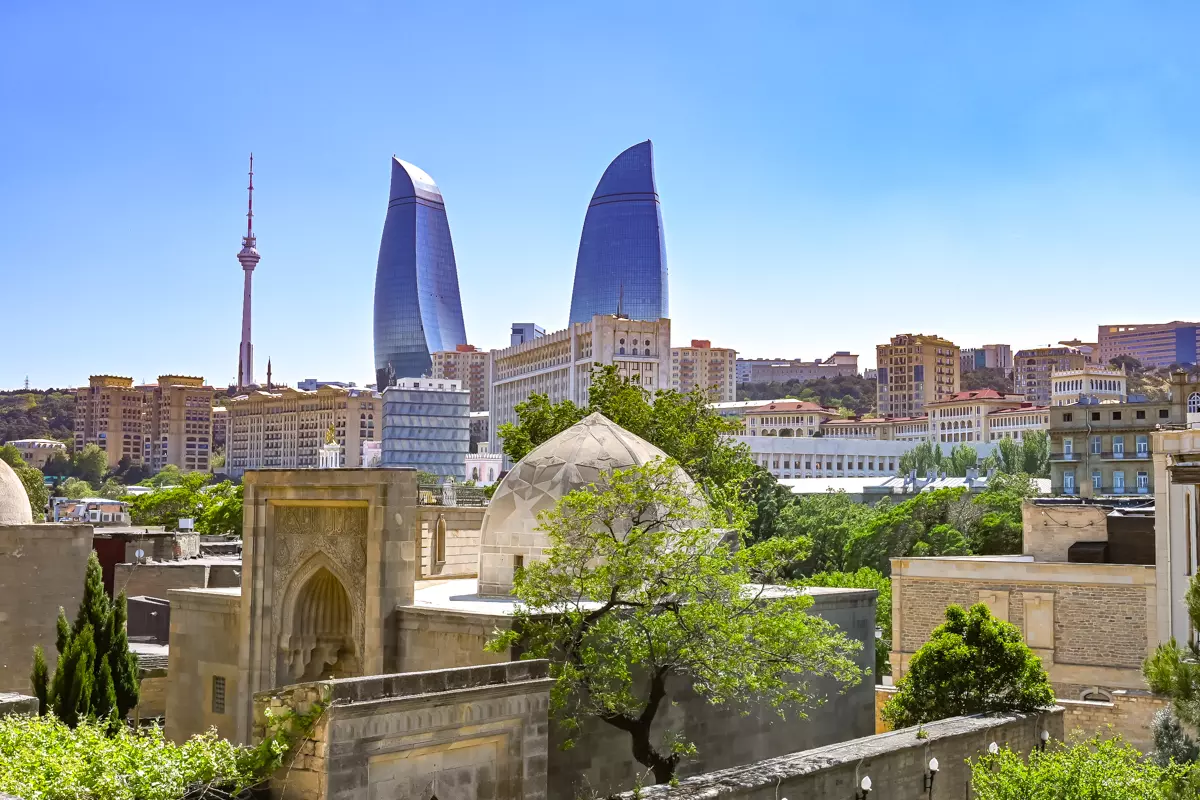
This was the residence of the former rulers of Baku, located on a hill above the Old City. From a distance, it looks like a stone complex. Once inside, you can see all the details: a mosque, mausoleum, bathhouse, and courtyards. It was all built in the 15th century, when Baku was still untouched by the oil boom.
Inside the palace, you’ll find not only grand and ornate interiors but also beautifully preserved courtyards, gardens, and fountains. The Shirvanshahs’ Palace complex includes various structures, such as the main mosque, a royal temple, bathhouses, and an impressive burial site where members of the dynasty are laid to rest. Every corner and building has its own story, reflecting both the lifestyle of the rulers and Baku’s importance in medieval Azerbaijan.
From the palace grounds, you get one of the most beautiful panoramic views in Baku. You can see the Flame Towers rising above the city, along with the rooftops and narrow streets of the Old City.
Working Hours & Ticket Price: The palace is open daily from 10:00 A.M. to 7:00 P.M. Tickets cost €7.5 (15 AZN) for adults and €3 (6 AZN) for children.
Museum of Miniature Books
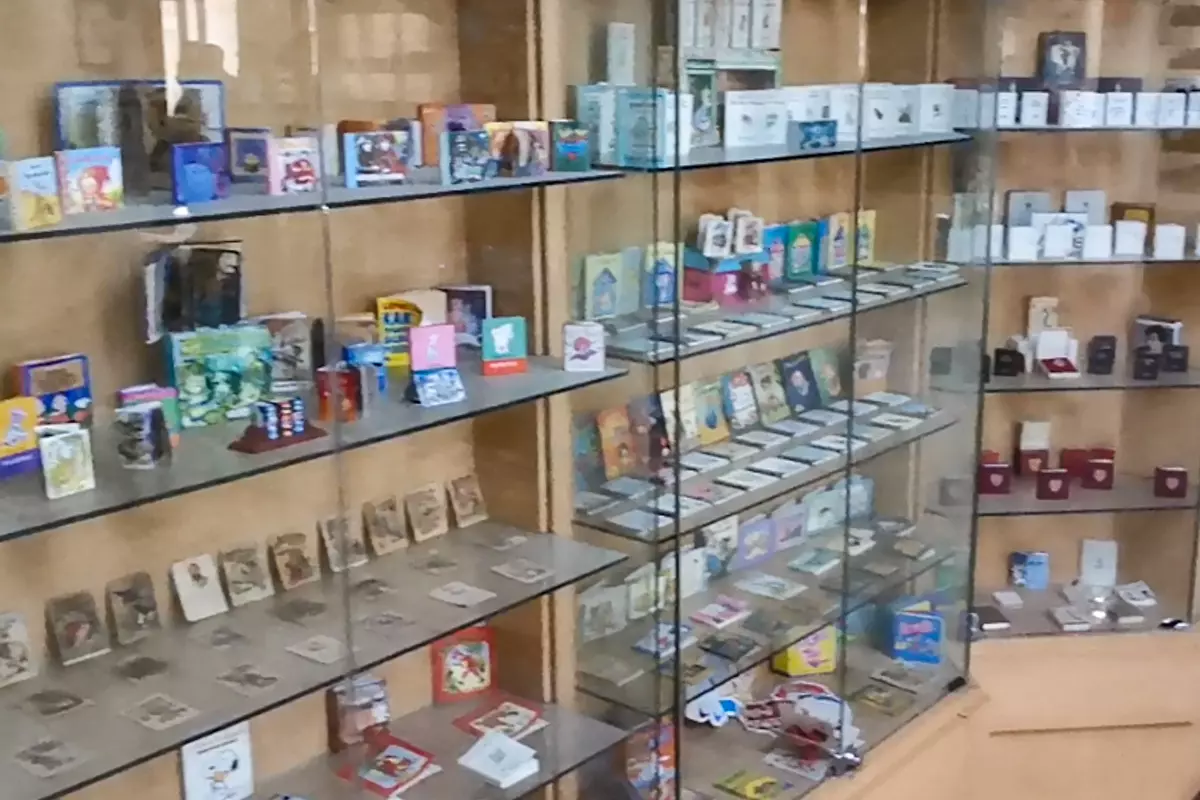
End your day with a visit to the Museum of Miniature Books. This is a unique place where visitors can explore an incredible collection of miniature books. Although the museum is small, it features a fascinating and valuable exhibition of more than 6,000 books that are not only tiny but also intricately illustrated.
Each book in the museum has its own story. These are not just literary works but true pieces of art, as their design and printing techniques are often highly sophisticated. Some books were created in extremely small formats—for example, ones that fit in the palm of your hand, with texts often written in microscopic script.
The museum offers a rare opportunity to closely examine these miniatures and learn about the processes behind their creation. I must admit, it was one of the strangest museums I’ve ever visited.
Working Hours & Ticket Price: The museum is open daily from 11:00 A.M. to 5:00 P.M. Admission is free.
Click the map to view the day’s route on Google Maps.
What To Do In Baku – Day 3
Dedicate your third day to nature and history outside the city. This will be a journey through unique geological sites, where you can witness fascinating natural phenomena and ancient monuments.
Gobustan Petroglyphs
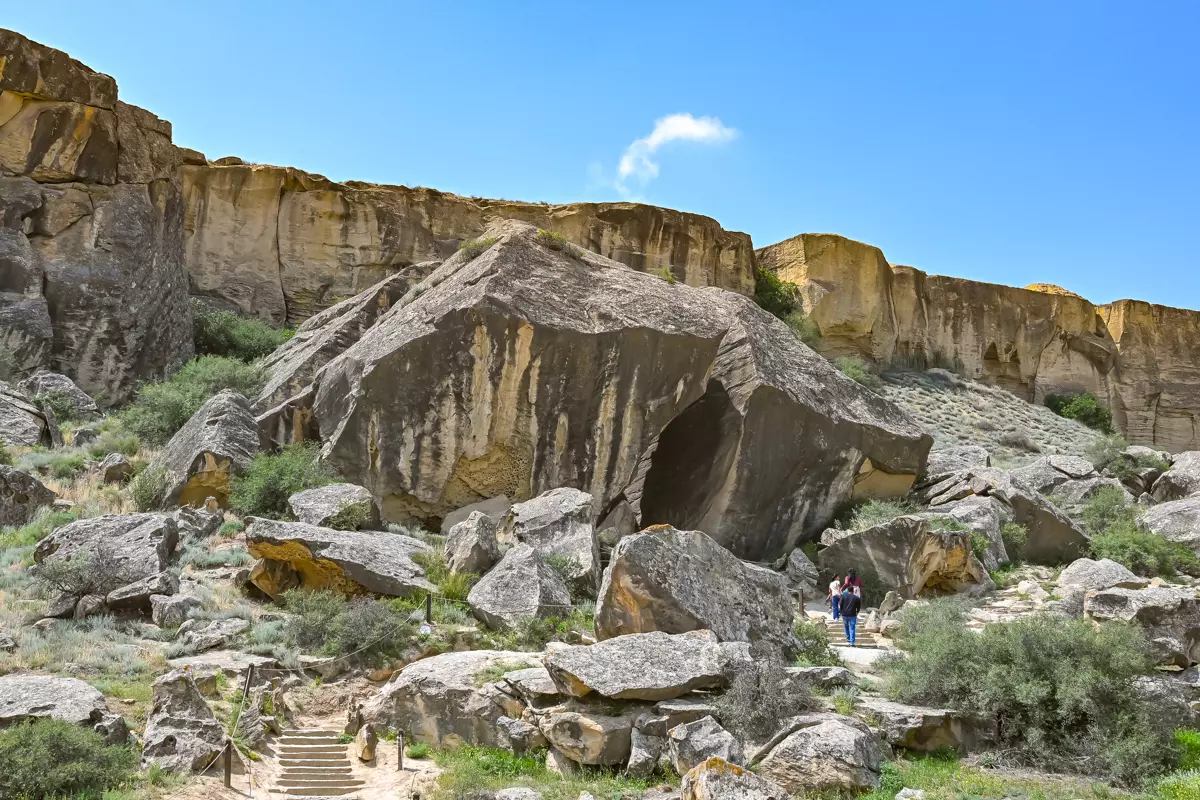
Start your day with a visit to the Gobustan Petroglyphs, one of the most intriguing and mysterious historical sites in Azerbaijan. The main highlights here are various carvings of human and animal figures, dances, and hunting scenes. Some of the carvings are deeply etched and clearly visible from several meters away, while others, though fainter, are still discernible.
The walk through the site is easy and enjoyable, with informative signs placed near key spots. These allow you to explore the area independently, though if you’re keen to learn more about the petroglyphs, having a guide can be very helpful.
Good To Know: There is almost no shade in this area, so on hot days, make sure to bring water, sunscreen, and a hat—the sun can be very intense.
Mud Volcanoes
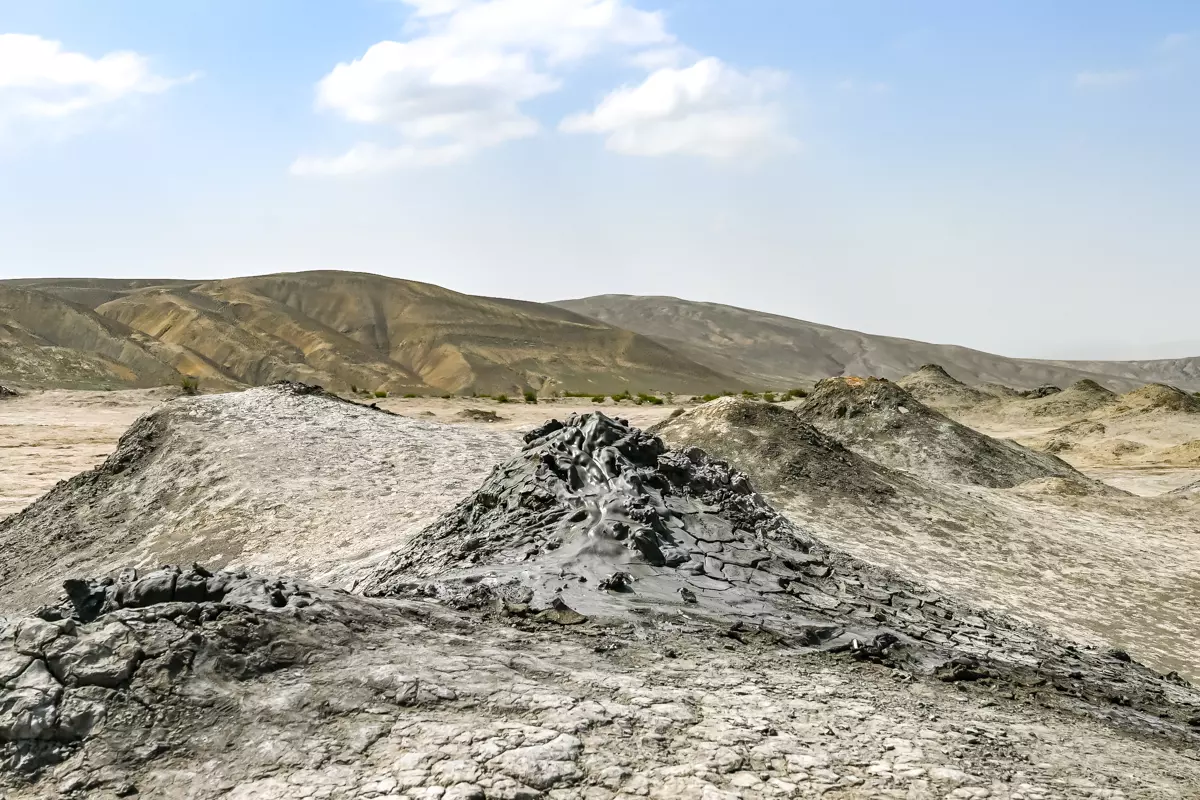
After visiting Gobustan, head toward another unusual natural wonder—the mud volcanoes. These grayish hills “boil” from within, bubbling with mud mixed with methane gas, creating a landscape that looks almost lunar.
The volcanoes aren’t very tall, but they leave a strong impression. You can get very close to some of them, but be careful not to slip. It’s best to visit the mud volcanoes in dry weather, as the area turns into a slippery clay field after rain. Keep in mind that there is no infrastructure here, no shelters or toilets, so make sure to prepare accordingly.
Ateshgah Fire Temple
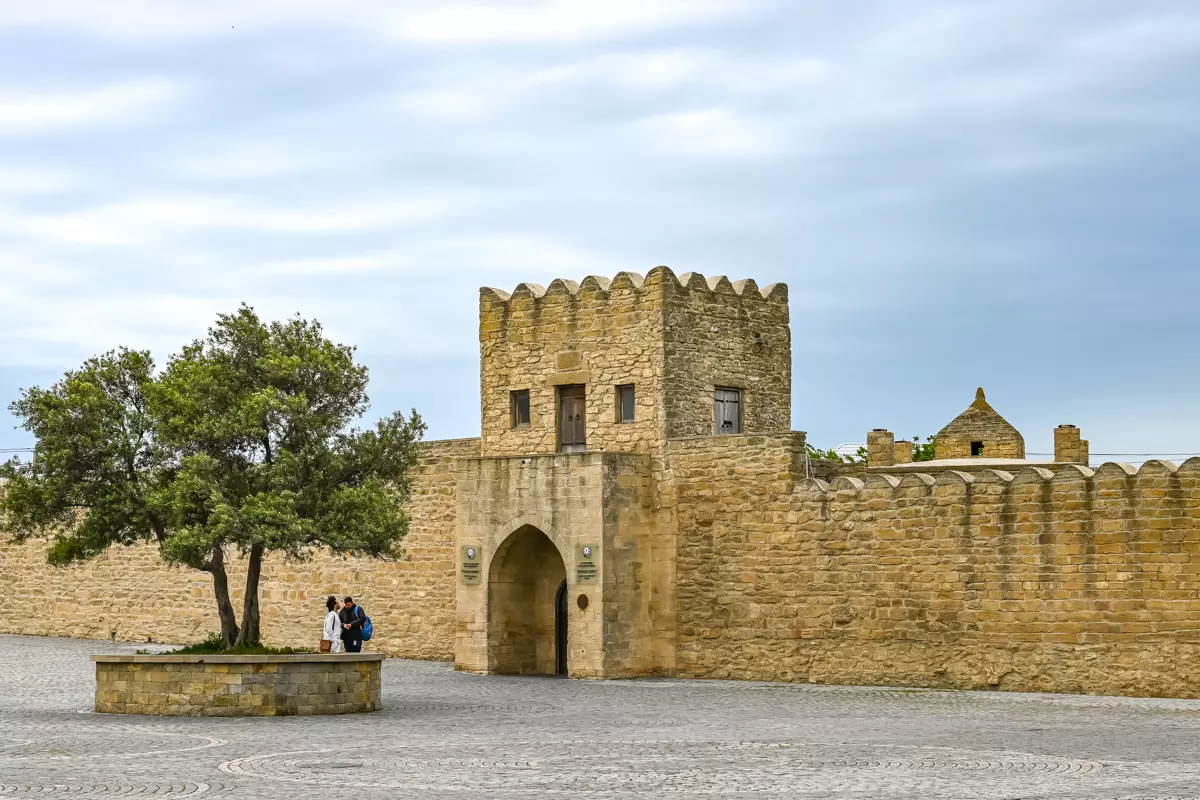
As you return to Baku, if you’re traveling independently and still have time, go to the Ateshgah Fire Temple. Here, fire was worshipped by Zoroastrians who came from India and Iran, as natural gas once burned continuously in this area.
Today, the flame is maintained artificially, but the temple has retained its authentic spirit. The complex consists of stone walls, an inner courtyard with an altar, and monks’ cells. An interactive museum introduces visitors to the religion, rituals, and daily life associated with the site.
Exploring the temple takes about 30–40 minutes, but if you pay more attention to the information, you might spend up to 1.5 hours. I don’t think a guide is really necessary here, but it’s helpful to briefly read the signs on-site.
Opening Hours & Ticket Price: Ateshgah Fire Temple is open daily from 10:00 A.M. to 7:00 P.M. The ticket price for foreign visitors is €4.5 (9 AZN).
Yanar Dag – Burning Mountain
The last stop of your day is Yanar Dag, also known as the Burning Mountain. This is a place where fire has been burning continuously for thousands of years. Yanar Dag was formed due to natural gas leaking from beneath the earth, which burns with an eternal flame. The fire burns 24 hours a day, 7 days a week, and sometimes reaches several meters high.
This natural phenomenon attracts both tourists and geologists who come to witness this unusual force of nature. Although I had planned to visit, after reading negative reviews from other travelers, I changed my plans. However, if you are on a guided tour to Gobustan from Baku, this site will likely already be included in your itinerary on your way back.
Opening Hours & Ticket Price: Yanar Dag is open daily from 10:00 A.M. to 7:00 P.M. The entrance fee is €4.5 (9 AZN).
Click the map to view the day’s route on Google Maps.
Full Day Tour: Gobustan & Sites
Powered by
GetYourGuide
Get Your Exclusive Azerbaijan Travel Tips PDF Now!
Based on my personal experience, this concise guide is packed with exclusive tips to help you save time, avoid common mistakes, and make the most of your trip to Azerbaijan. Here’s a sneak peek at what’s inside:
- 🚶♂️ Local experiences – authentic cultural activities and experiences that will help you immerse yourself in Azerbaijani traditions.
- 🍽️ Some best restaurants – places I visited and highly recommend.
- 💡 Exclusive tips – where to change money, what to remember, and mistakes to avoid – advice you won’t find anywhere else.
- 🔗 Helpful links – Google Maps, websites for reservations, and other links that will make your trip significantly easier.
- 🗺️ In-depth travel info covering not just touristy Azerbaijan, but also lesser-known regions like Nagorno-Karabakh and Nakhchivan.
How To Get To Baku
Baku Heydar Aliyev International Airport ranks as Azerbaijan’s largest and most important airport, handling hundreds of international and regional flights every day. Azerbaijan Airlines, the national carrier, flies directly to many cities across Europe, Asia, and the Middle East.
Major international airlines like Turkish Airlines, Lufthansa, Qatar Airways, Flydubai, and Wizz Air operate regular flights to Baku. Many travelers connect to Baku through Istanbul, Dubai, or other major transit hubs. Convenient connections make Baku easily accessible from both Europe and Asia, and ticket prices remain relatively low compared to flights to other Asian countries.
Best Time To Visit Baku
You can visit Baku year-round, but the most pleasant weather is from April to mid-June and from September to November. During these months, warm but mild temperatures and lush parks or gardens in bloom make it ideal to explore the Old City, walk along the Caspian Sea promenade, or visit nearby natural spots. I already knew that May was one of the best times to visit Baku and Azerbaijan before my trip, and choosing to go then turned out to be a great decision.
In summer from July to September, temperatures often rise above 35 °C, and the dry climate with strong winds can feel exhausting. Winters stay quite mild, with temperatures dropping just a few degrees above zero, making it a good season for those who prefer fewer crowds and a quieter atmosphere.
Average Temperature
Where To Stay In Baku
Baku offers a wide range of hotels and accommodation options – from budget to luxury. Below, I’ve listed a few suggestions for different budgets. I hope you find the one that suits you best.
Budget Hotels
- Sahil Hostel & Hotel – A simple but popular 2-star hostel located near the Caspian Sea boulevard and the metro. It offers both shared and private rooms, free Wi-Fi, and a cozy lounge area.
- Maajid Boutique Hotel – A cozy boutique hotel near Baku’s Old City, offering uniquely designed rooms, free Wi-Fi, breakfast, and a relaxing lounge area.
Mid-Range Hotels
- Pera Hotel Baku – A modern and comfortable hotel located close to Baku’s city center. It offers spacious rooms, free Wi-Fi, a fitness center, and a welcoming atmosphere for both business and leisure travelers.
- During my stay, I spent time at both Safran Hotel and OLF Hotel. While the latter is located near the Old City and has excellent reviews, I found it to be quite cold, something I can’t say about Safran Hotel. Although the rooms there were more basic, the service, communication, and the attitude of both the staff and manager left a very positive impression.
Luxury Hotels
- Fairmont Baku – Flame Towers – Located in one of Baku’s most iconic buildings. Luxurious rooms with sea views, a spa center, indoor pool, and several restaurants.
- Four Seasons Hotel Baku – An elegant five-star hotel near the waterfront. It offers spacious rooms with marble bathrooms, a rooftop pool, top-tier service, and an excellent central location.
Where To Eat In Baku
Baku has a wide range of restaurants and cafes to suit every taste and budget – from authentic Azerbaijani food to modern places offering international cuisine. Below are a few reliable spots where I believe you’ll be able to enjoy a tasty meal.
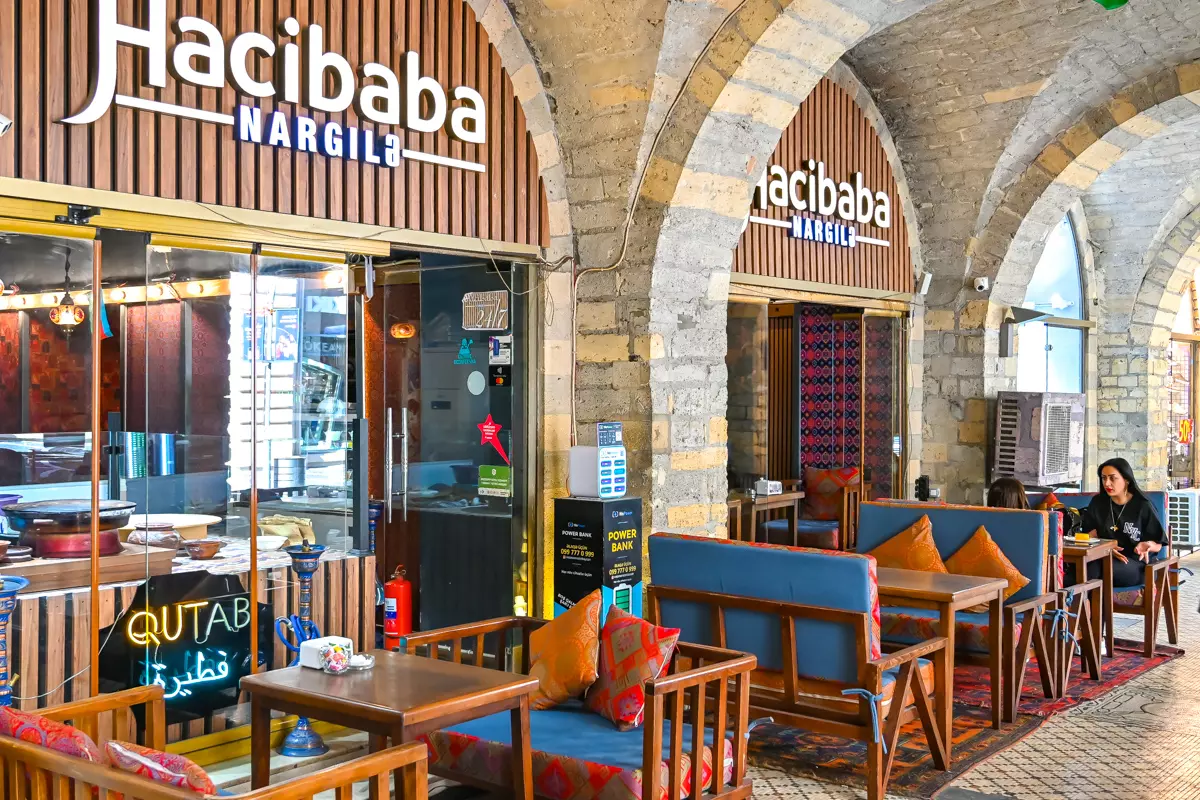
Nergiz Restaurant
If you’re looking for classic Azerbaijani food in a traditional setting, Nergiz Restaurant delivers exactly that. Tucked near Fountain Square, it offers cozy interiors, quick service, and a solid menu of local favorites like dolma, plov, and kebabs. Prices are reasonable, and the atmosphere feels local without being too touristy. A reliable pick for both lunch and dinner.
Dolma Restaurant
Don’t let the narrow entrance fool you — Dolma is a local favorite for a reason. Inside, the space is intimate and decorated with carpets and traditional touches. The menu covers all the classics, from qutab and dolma to lamb stews and fresh salads. Portions are generous, the prices are modest, and the food tastes like a home-cooked meal.
Tea Garden 145
Set on a terrace in the heart of the Old City, Tea Garden145 is perfect for a relaxed afternoon or an early dinner. Expect flavorful Azerbaijani dishes, strong black tea served with jam, and a setting that feels somewhere between a tea house and a cultural time capsule. It’s the kind of place where you sit back, sip slowly, and enjoy the rhythm of Baku.
How To Get Around Baku
Baku is a modern city with a well-developed public transportation system, making it convenient to get around. You can choose between the metro, buses, ride-hailing services, or simply walking – especially in the city center, where many attractions are within walking distance.
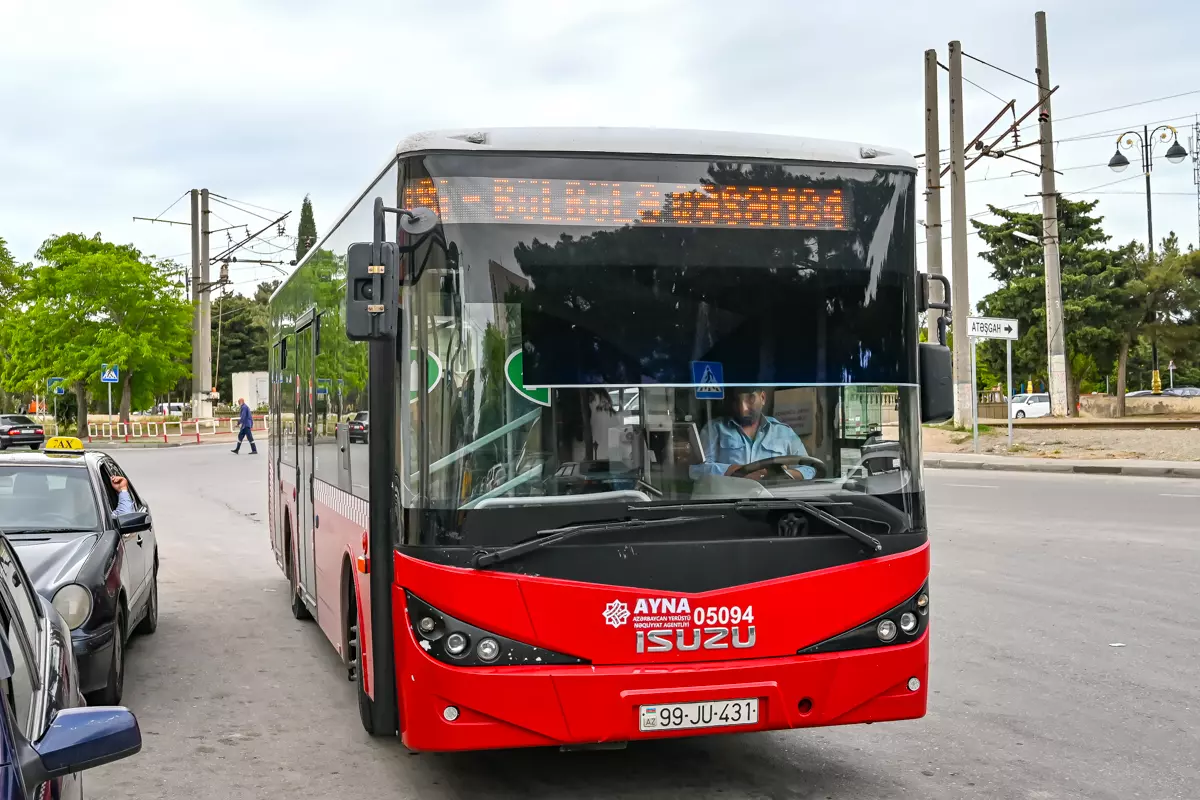
By Metro
The Baku metro is fast, reliable, and one of the cheapest ways to travel around the city. The system has three lines, two of which are commonly used by tourists: the red line (Line 1) and the green line (Line 2). These connect the city center with residential areas and major stations such as 28 May, Sahil, Icheri Sheher, Nizami, and Nariman Narimanov. The metro operates from 6:00 A.M. to 12:00 A.M.
A single ride costs €0.25 (0.50 AZN), but you need to purchase a BakıKart, a contactless card. It can be purchased at metro station machines, and the card can be topped up using either a bank card or cash.
By Bus
Baku’s bus network covers the city well and connects even the more distant areas. All city buses accept the BakıKart. Most routes start early in the morning and run until late at night, usually every 10–15 minutes. Tickets cost the same as the metro: €0.25 (0.50 AZN).
By Taxi
While public transport is efficient, ride-hailing apps are often more convenient and faster. Bolt and Uber work well in Baku, along with the local app Maxim, which sometimes offers the lowest prices.
FAQs About 3-Day Baku Itinerary
Yes, Baku is considered a safe city for both locals and tourists. It is safe to walk around in public places both during the day and in the evening.
Most travelers to Azerbaijan need an e-visa. You can easily get it online through the official website evisa.gov.az. The process is simple, costs €17 (34 AZN), and usually takes 1–5 business days for a response.
The most convenient way is the AERO bus (1.30 AZN, runs every 30 minutes) or ride-hailing apps like Bolt. The trip to the city center takes about 25–35 minutes.
Some young people, service staff, and museum personnel speak English, but most older people speak only Azerbaijani or Russian. This was not a problem for me since I speak Russian well, but to avoid misunderstandings, I recommend having a translation app.
Definitely. The metro and buses are reliable and cost only €0.25 (0.50 AZN) per ride, but you need a BakıKart card. You can buy it at metro stations.
Of course, it is. In 2–3 days you can see the main sights, stroll through the Old City, along the waterfront, and even visit Gobustan or the Fire Temple.
For a budget traveler, a day can cost about 30–40 EUR (food, transport, entrance fees). For mid-range travelers, about 50–80 EUR. For luxury travelers, more, depending on your choices.
Book your flight
For the best flight deals, I always rely on Skyscanner. Features like Multi-city and Explore Everywhere help me uncover incredible travel opportunities.
Rent a car
Discovercars is my top choice for comparing car rental prices for any road trip around the world. The booking experience is always smooth and easy.
Travel insurance
SafetyWing provides affordable travel medical insurance with global coverage, perfect for digital nomads and long-term travelers.
Book Tours & Attractions
Experiencing a destination to the fullest is easier with a well-planned itinerary. I use GetYourGuide for guided tours and Tiqets for quick access to museum and amusement park tickets.
Protect yourself online by VPN
No matter where I go, I always use NordVPN for secure browsing and to ensure I can access websites that might be blocked in certain countries.
Disclosure: I only suggest companies that I personally rely on. If you use the affiliate links in my posts to book services, I’ll earn a small commission, with no extra cost to you.
Used this 3 Days In Baku Itinerary for your trip? Leave a comment and share your experience!
Share on

Hi, my name is Marius, and I’m driven by a desire to explore the hidden corners of the world. Less-traveled destinations like Saudi Arabia, Kazakhstan, and Mongolia fascinate me with their authentic cultures and untouched landscapes. For me, every trip is an opportunity to challenge myself, meet new people, and create memories that last a lifetime.
